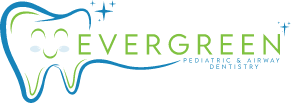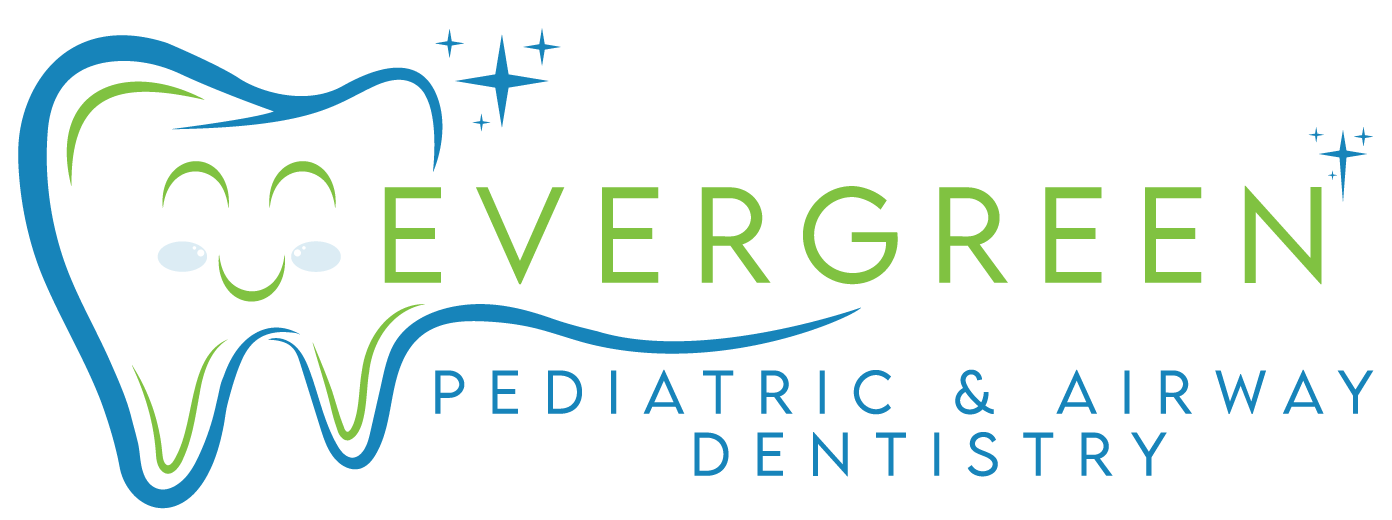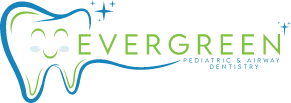Is Your Child a Mouth Breather? Here’s What You Need to Know
Mouth breathing in children might seem like a small issue, but it can have significant implications for their oral and overall health. From the way their face and jaw develop to their sleep quality, this habit can affect multiple aspects of their well-being.
At Evergreen Pediatric Dentistry, we’re dedicated to helping parents understand and address mouth breathing in children early to ensure their child grows up with healthy, strong teeth and optimal oral health. Here’s everything you need to know about this condition and how you can support your child.
What Is Mouth Breathing?
Mouth breathing is exactly what it sounds like—breathing through the mouth instead of the nose. While it’s normal for this to happen occasionally, like during intense physical activity or when the nose is temporarily congested, chronic mouth breathing can often signal deeper issues that shouldn’t be overlooked.
What Causes Mouth Breathing in Children?
There are several reasons why children may develop mouth breathing, many of which are tied to physical or habitual factors:
- Nasal Congestion from Illness or Allergies: Allergies, colds, or sinus infections can cause the nasal passages to become blocked, forcing a child to breathe through their mouth. When nasal congestion persists or becomes recurrent, it can turn mouth breathing into a habit.
- Enlarged Tonsils or Adenoids: Swollen tonsils or adenoids can obstruct the nasal airways, making it difficult or impossible to breathe through the nose. This is a common cause of mouth breathing in children and something that may require medical attention.
- Deviated Septum: A deviated septum, which is a structural irregularity in the nasal passage, can restrict airflow through the nose. Such issues might need correction for proper breathing to resume.
- Habitual Behavior: Sometimes, mouth breathing becomes second nature. A child might continue to breathe through their mouth long after the original cause, such as a cold or blocked nose, has resolved. Once this habit is established, it can be challenging to break without intervention.
Identifying the root cause is key to addressing this habit effectively.

Kids Mouth Breathing Issue
The Effects of Mouth Breathing on Oral Health
Chronic mouth breathing in children can profoundly impact their oral health and even their facial development. While it might seem like a simple habit, its long-term effects can be significant and, in some cases, irreversible if left unaddressed.
How Mouth Breathing Affects the Face and Jaw
One of the most concerning consequences of chronic mouth breathing is the way it alters the growth and alignment of your child’s face and jaw. Over time, this seemingly small habit can lead to noticeable changes, such as:
- Crooked teeth: Limited airflow through the nose can disrupt proper tongue posture, which plays a crucial role in guiding teeth alignment.
- A narrow palate: Mouth breathing can prevent the palate (roof of the mouth) from widening naturally, making less room for teeth to align properly.
- Elongated facial structure: This condition, often referred to as “long face syndrome,” occurs when the natural growth patterns of the face are altered. This can impact not just appearance, but also functionality, such as proper jaw alignment.
For a growing child, these changes can affect more than just their smile. Issues with jaw alignment or a constricted palate can also lead to challenges with chewing, speaking, and even breathing during sleep.
Importance of Nasal Breathing
Breathing through the nose is essential for maintaining proper oral posture. Nasal breathing encourages the tongue to rest on the roof of the mouth, promoting healthy jaw development and preventing issues like overcrowding of teeth.
Identifying Mouth Breathing in Your Child
It’s not always easy to spot mouth breathing, but here are some common signs parents can look out for:
- Dry lips or mouth.
- Noisy breathing or frequent snoring during sleep.
- Bad breath.
- Cracked lips or pale gums.
- Daytime fatigue or trouble focusing, potentially linked to poor-quality sleep.
If you notice any of these symptoms, it’s worth observing your child’s breathing habits more closely and consulting a professional for guidance.
The Link Between Mouth Breathing and Sleep Disordered Breathing
Mouth breathing is often intertwined with sleep disordered breathing (SDB), such as sleep apnea.
What Is Sleep Disordered Breathing?
When children breathe through their mouths while sleeping, it can contribute to sleep apnea, a condition where breathing temporarily stops during sleep. This disrupts sleep cycles and can lead to:
- Poor sleep quality.
- Daytime behavioral issues, such as hyperactivity or irritability.
- Delays in physical growth and cognitive development.
Addressing mouth breathing early can help prevent these complications and improve your child’s overall quality of life.

Sleep Disorder in Children
Addressing Mouth Breathing: The Role of Evergreen Pediatric Dentistry
At Evergreen Pediatric Dentistry, we specialize in identifying and treating mouth breathing in children. Our approach prioritizes early intervention to minimize the impact on your child’s oral health and development.
Treatment Options We Offer
- Orthodontic interventions, like palate expanders or braces, to correct jaw and teeth alignment.
- Myofunctional therapy, a set of exercises to strengthen oral muscles and encourage nasal breathing.
- Collaboration with ENT (ear, nose, and throat) specialists to address underlying causes like enlarged tonsils or adenoids.
Our team’s expertise ensures your child receives the care they need for long-term improvement.
Tips for Parents to Help Their Child Breathe Through the Nose
If your child tends to breathe through their mouth, there are practical steps you can take at home to encourage healthy nasal breathing. Mouth breathing can often be addressed with small adjustments to daily routines and some targeted interventions. Here are a few approaches to consider:
- Relieve nasal congestion: A clogged nose can force your child to breathe through their mouth. Using a saline nasal spray can help clear up nasal congestion brought on by colds or allergies. This simple solution makes it easier for them to breathe through their nose.
- Introduce breathing exercises: Encourage your child to practice simple breathing exercises. For example, ask them to close their mouth and consciously breathe through their nose. You can turn this into a relaxing activity by doing it together for a few minutes every day.
- Encourage good posture: Believe it or not, posture plays a role in how we breathe. Help your child maintain good posture throughout the day, whether sitting, standing, or sleeping. Proper alignment helps keep airways clear and supports better breathing habits.
- Create a sleep-friendly environment: Nighttime can often compound mouth breathing. Make the sleep environment more conducive to nasal breathing by using a humidifier to add moisture to the air or allergen-proof bedding to reduce irritants.
- Address underlying issues: Sometimes, mouth breathing is a symptom of an underlying cause. It’s important to identify the root of the issue. For example, if allergies are the culprit, speak with an allergist to manage seasonal triggers. If you suspect structural issues like enlarged tonsils or adenoids, consult with an ENT specialist for further guidance.
Consistency is key! These steps can significantly improve your child’s breathing over time.
The Importance of Early Intervention
Addressing mouth breathing early in life is essential for your child’s overall health and development. When left untreated, mouth breathing can lead to a range of complex issues—from oral health problems like misaligned teeth and gum disease to broader challenges such as poor sleep quality, difficulty focusing, and even delayed growth.
The impact goes beyond just dental health. Children who breathe often experience disrupted sleep, which can affect their concentration and performance in school. Over time, these seemingly small issues can compound, potentially influencing their overall quality of life in significant ways.
Encouraging your child to practice nasal breathing at a young age is one of the most effective ways to support proper facial and jaw development. By establishing this habit early, you can help prevent many common dental problems later in life and ensure your child grows up healthier and more confident.
Common Myths About Mouth Breathing
Despite being relatively common, mouth breathing is often misunderstood.
- Myth: “Mouth breathing is harmless.”
Chronic mouth breathing can lead to oral health problems like misaligned teeth, as well as sleep and behavioral issues.
- Myth: “Kids will naturally outgrow mouth breathing.”
While some children may improve as they grow, many require intervention to correct the habit and address the underlying cause.
- Myth: “It’s only a problem during the night.”
Mouth breathing during the day can also indicate chronic issues.
Being informed helps you take the right steps to support your child.

Mouth Breathing Treatment
Maintaining Good Oral Health in Mouth Breathers
For children who experience mouth breathing, good oral hygiene becomes even more crucial. Help your child by:
- Encouraging regular brushing and flossing to prevent dry-mouth-related cavities.
- Using fluoride toothpaste for added protection.
- Scheduling regular check-ups with Evergreen Pediatric Dentistry to monitor their oral health and development.
By pairing healthy habits with professional care, your child’s teeth and gums can stay healthy despite mouth breathing challenges.
Start the Journey to Better Breathing
Mouth breathing may seem like a small concern, but its effects on a child’s oral and overall health can be big. Understanding its causes and addressing it early can make all the difference in ensuring they grow up healthy and confident.
At Evergreen Pediatric Dentistry, we’re here to help. If you’re worried your child may be a mouth breather, don’t hesitate to contact us. Our dedicated team will work with you to identify the issue and provide the best care tailored to your child’s needs.
Together, we can set your child on the path to better breathing, restful sleep, and healthy smiles.
Evergreen Pediatric Dentistry
https://www.google.com/maps?cid=14720788683151219551
12910 Totem Lake Blvd NE #103, Kirkland, WA 98034, United States
(425) 814-3196
https://evergreenkidsdentist.com/


